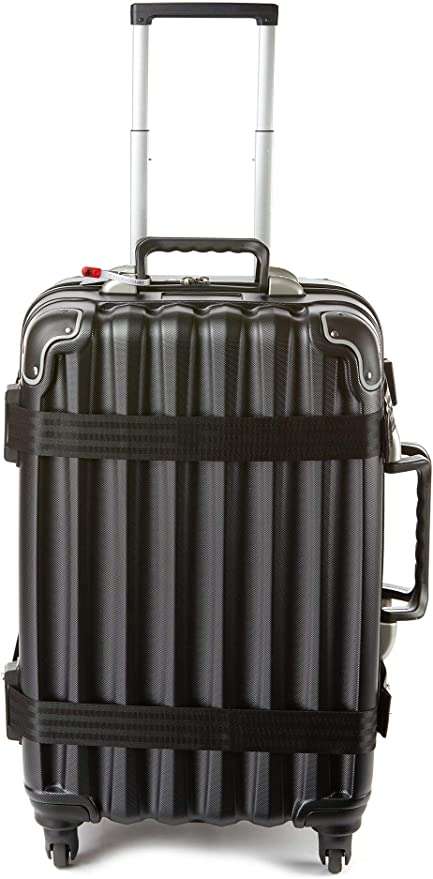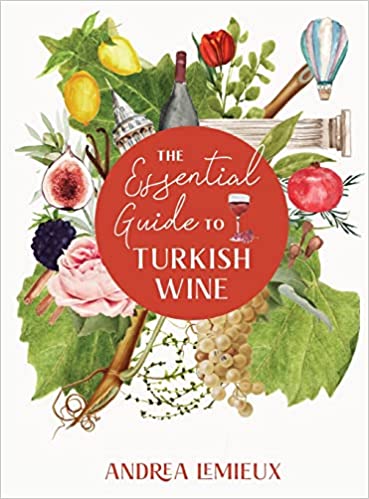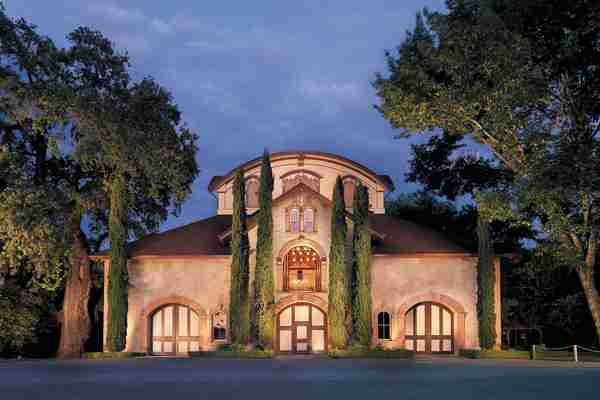Turkish Wines: Wine-Travel, History & Tasting Notes
I’ve accumulated a lot of books about wine over the years, as one does I suppose. As I started to research my trip, I gathered a stack of some of my more generalized wine books, and started to look through them for information about Turkish wine.
It took me about 23 seconds to figure out that Turkey and Turkish wine is largely absent from most wine books.
You might find a couple of sentences here and there, and (if you hit the motherlode) maybe even a paragraph. Turkish wines are overlooked and overshadowed.
Turkey is the Jan Brady of the wine world.

History Of Turkish Wine
But it wasn’t always that way. Transcaucasia (Georgia, Armenia, Azerbaijan, and southeastern Turkey) was almost certainly Ground Zero for Vitis vinifera.
Archeobotanists (yep, that’s a real thing) have found evidence of grape-growing and wine making in Anatolia (central Turkey) dating back 7,000 years (think Neolithic Stone Age).
Fast forward about 5,000 years, and there’s evidence that wine played a prominent role in the ancient Hittite civilization of Anatolia.
The Hittites were were polytheistic, worshipping a multitude of mostly nature gods (Gozer not among them), and wine was used in both ritual and celebration.
But the Hittites weren’t using wine just for religious purposes — they were ancient oenophiles. Archaeologists have found cuneiform tablets indicating the Hittites had specific words for different types of wine.

Turkey ranks 4th in the world for acres under vine, yet only 5% of those grapes are made into wine (most are eaten as table grapes or raisins).
During the loooong Ottoman Empire (624 years is loooong), alcohol was more or less banned. The Ottomans eased restrictions in the second half of the 19th century, and wine production increased dramatically.
Up until World War I, Turkish wines were well known and regarded throughout Europe. But after World War I, and the subsequent conflicts between the Turks and the Greeks (they don’t so much love each other), the Turkish wine industry nearly imploded.
The Turkish government seized control of alcohol production in the mid-1920s, with the notable exception of wine.
However, with few regulations on quality, wines tended to be mass-produced plonk.
It wasn’t until the 1980s that Turkey began to fully modernize its winemaking techniques, turning an eye toward quality and craft.
Because Turkey is a predominantly Muslim country (98%), alcohol consumption is low (most of the figures I read indicate only around 15% of Turkish people drink alcohol).
As such, the most popular drink in Turkey is tea. But among those who do drink alcohol, the most popular drink is Raki, a clear anise flavored spirit similar to Greek ouzo.
Beer is second in popularity, followed by wine. And while it’s not technically illegal to drink or make alcohol in Turkey, the government doesn’t make it easy. There’s a whole array of restrictions:
- Retail alcohol sales are banned from 10pm to 6am.
- No alcohol advertising (this includes websites for wineries and other producers).
- No consumer wine/alcohol tastings. Wineries and other producers must host private tastings to get the word out about their product.
- Alcohol is taxed, and heavily. There’s an import tax as well as a Special Consumption Tax, based on the amount of alcohol in a particular drink (for wine, it’s somewhere around $1.70 per liter). All of this means that wine is expensive in Turkey.
- Every bottle of wine sold in Turkey must include a warning label with the words, alkol dostunuz degildir, which translates to alcohol is not your friend. I am not making this up. (I’m also trying to picture those words on the back of a bottle of Bud Light.)
- 2022 Update: In recent years Turkey has developed a really interesting wine bar scene. Check out some of the can’t miss wine bars in Istanbul.
In light of these restrictions, many wineries in Turkey have turned their focus to wine tourism (vineyard routes that focus on agriculture) and international markets.
Which brings me to how I ended up with two bottles of indigenous Turkish wine.
Turkish Wine Of The Anatolia Region
I received two samples from the US marketing rep for Vinkara Winery, (vis-a-vis those website prohibitions, note the web address is usa.vinkarawines.com) located in Kalecik in north-central Turkey, within the ancient region of Anatolia.
The climate in Anatolia is continental — cold winters and hot, dry summers.
Vinkara has 135 acres under vine, planted at 700 meters (for the metrically declined, that’s about 2,000 feet) above sea level.
The Kalecik area is surrounded by mountains, which provide for large diurnal temperature changes (the difference between the day’s highest temperature and the night’s lowest temperature). This is important because the high temperatures allow grapes to ripen fully, while the low temperatures preserve a grape’s acidity.
Vinkara specializes in the production of indigenous Anatolian grape varieties:
It is my absolute pleasure to introduce these outstanding grape varieties to the world. The wines that we are making have incredible, strong personalities and sing songs of our rich history. – Ardıç Gürsel, Founder, Vinkara
Before I get to these indigenous wines, we need two maps of the Turkish wine regions.

Map Of Turkey’s Wine Regions
Where to stay and what to do in turkey’s top wine regions
If your wine travel adventures bring you to Turkey, you’re most likely to visit Cappadocia (where you’ll sleep in caves) in the Central Anatolia Wine Region and Bodrum in the Aegean wine region.
Our recommendation is to stay in Istanbul for a few nights then venture out, with one night back before your flight home.
Cappadocia- Central Anatolia Wine region
In our history lesson above we talk about the ancient Hittite civilization in central Anatolia.
fun fact: Hittite is the oldest Indo-European language known. It’s older than Greek, Latin, or Sanskrit.
Cappadocia is known for its natural valleys, rock formations, and caves. Early Christians carved out incredible rooms and churches within these caves.
There are unique cave hotels built into the landscape, allowing visitors to fully immerse themselves in the region’s culture and natural beauty. This list showcases some of the most unforgettable cave hotels in Cappadocia.
If you’re planning a trip to Cappadocia, why not sleep a cave hotel among ancient oenophiles in this bucket list destination.
Kapadokya Hill Hotel & Spa

I love a good breakfast buffet and the Kapadokya Hill Hotel & Spa has a wonderful spread. The hotel staff is known for being attentive and the front desk is open 24hr. If you’re traveling remotely you’ll enjoy the decent wi-fi. As the name suggests the hotel has a spa and wellness center, fitness center and a seasonal outdoor pool. There’s also free parking on site if you’ve rented a car for your Turkish wine tour. Room service is available (and preferred after a long day of wine tasting) from the Smart TV. And the hotel has views of the Gore Ruins.
And all rooms have bathrobes, a hairdryer, slippers and toiletries.
The hotel is 4mi from Nevsehir Town Center and 9mi from Kaymakli Underground City. If you did not rent a car, they have an airport shuttle from the Nevsehir Airport which is 22mi away.
Century Cave Hotel

Talk about an insta-worthy hotel. Get a pic of the hot air balloons with the sunrise as the back drop and send it to all your friends back home that said a trip to Turkey was a bad idea.
The Century Cave Hotel is awe-inspiring. Aside from the views, it’s location is perfect for sightseeing, it has decent wi-fi (a must these days), a terrace restaurant overlooking the fairy chimney rock formations and has a Turkish bath. The bus terminal of Goreme is only 1,650 feet from the hotel but the hotel also has an airport shuttle for a fee.
Cappadocia Wine Tasting Tour
A private or small group tour from Cappadocia will take you into the wine region to visit three wineries. Once again, you’ll experience stunning views of Turkey’s landscape. although you can take a self-guided tour of Turkey’s wine region, it’s so relaxing to leave the driving to someone else. And, they’ll do the planning for you.
You’ll learn about Cappadocia’s ancient wine-making traditions tasting wines from not only Cappadocia but also from other regions in Turkey. they even have snacks and will arrange hotel pickup. Winning!
Turkish Cooking Class and Wine Caves
Immerse yourself in Turkish tradition through the food and wine in this 4 hour tour and cooking class.
You’ll be invited into a family’s home in Ayvali Village in Cappadocia to enjoy your cuisine.
You’ll shop for ingredients at the local market, make a stop into a typical Turkish coffee house, and sample regional wines at wine cave. If you’ve never had Turkish coffee, your homework is to find a Turkish coffee house at home or order one the next time you dine in a mediterranean restaurant. You will not be disappointed.
Oh… and don’t drink the grounds at the bottom of the cup.
Bodrum- Aegean Wine Region
A stay on the eastern side of Bodrum offers views of the most incredible waters you’ve ever seen. The color of the water is an unbelievable blue. Crayola hasn’t even been able to figure it out.
fun fact: this gorgeous blue color is because of the reflection of the blue sky, and because the Aegean sea doesn’t have a lot of solid matter like plankton or mud floating in the water.
Akkan Hotel

The Akkan Hotel is located in the heart of the city. It’s only .25mi from Bodrum Castle (or the Castle of St. Peter) which is a must see. Akkan has sea views, very close to nightlife and has a private beach area where you can get some R&R after a long, hard day of wine tasting.
Hotel Bleu Nuit

Hotel Bleu Nuit is minutes walk to two beaches if you’re into that sort of thing, 24 hour front desk, room service for when you want to crash out after a long day of sightseeing and wine sipping, and free parking if you’ve rented a car or airport shuttle if you didn’t. Remember to take advantage of the breakfast buffet before you head out in the morning. This hotel also has wi-fi although not awesome.
Food and Wine pairing Dinner at Karnas Vineyards Bodrum
After your day of lounging at the beach, be sure to experience this 4 course Turkish meal and wine pairing.
I wish I had done this before my corned beef and cabbage night (which really was quite good). Karnas Vineyards is a beautiful property (I’m running out of describing words for the Turkish landscape).
You’ll sip their award winning Zinfandel overlooking the vines. The Zinfandel, Syrah, Cabernet Franc and Vermentino are all available to purchase. You will want to bring a few bottles home because it’s not something you’ll have access to back in the states. We’ll tell you how you can do that below.
Day Wine Tasting Trips From Istanbul
Full-Day Wine Tour from Istanbul
Your full day tour includes pick up from your hotel you’ll head into the sub-region Kirklareli which is in the Marmara wine region of Turkey.
Marmara is responsible for nearly 40% of Turkey’s wine production and produces the most elegantly balanced wines in Turkey.
The sub region of Thrace, Kirklareli, is known for crisp white wines and balanced reds.
On the drive you’ll hear about the Thracians who paved the way for wine, cultivating grape vines as early as the 2nd century AD. Stretch your legs in Poyrali and have a walk around the village. The Chamlija Winery set in the Strandja mountains at an elevation of 2,790 feet has mountain views, which I’ve heard makes the wine taste better. You’ll have to decide for yourself.
In total you’ll be visiting three wineries, four glasses at each of the Turkish varietals Cabernet Sauvignon, Merlot, Zinfandel, Sauvignon Cris and Sauvignon Blanc.
In Chateau Nuzun winery, learn about the aging of these organic wines in French oak and other techniques as you capture charming hillside and vineyard views.
Want to bring your wine from turkey home with you?
We recommend the VinGardeValise 12 bottle wine suitcase. What we do is bring a duffle bag to carry our clothes home. You can still check a duffle bag home btw, you don’t have to schlep it around for all four connections.
Pro tip: you can also use the duffle bag to drop your laundry off if you’re doing an extended trip.
Turkish Wine- Food Pairing
I’m afraid I wasn’t brave enough to try my hand at making Turkish food, so ended up enjoying these two Turkish wines with Corned Beef & Cabbage . . . and you know what? They were a pretty good match.
Turkish Wine Narince 2013 /86 points

From the Black Sea region (in northern Turkey), Narince (pronounced Nah-rin-djeh), is indigenous to the northeastern region of Tokat.
Narince is grown more for its grape leaves (for use in dolma, a popular stuffed grape leaf dish) than for its use in wine.
Narnice translates to delicately, an appropriate descriptor for this wine.
A lovely butter-straw color in the glass. Had I tasted this wine blind, I might have guessed it was a Viognier — the aromatics were so floral and perfume-like.
Tropical flavors of pear, peach and pineapple. Medium body, with a spirited acidity.
Turkish Wine Kalecik Karasi Reserve 2012 /86 points

From Central Anatolia. This wine is 100% Kalecik Karasi, (pronounced: Kah-le-djic-car-ah-ser). Kalecik Karasi is sometimes abbreviated simply KK, which is probably for the best (at least for those of us who have no Turkish language skills).
Kalecik Karasi is mostly grown in the north-central region of Turkey, near the town of Kalecik, and is often compared to Pinot Noir.
Aged for 14 months in French oak. Ruby red, tinged with purple. I found it to be very soft and approachable right out of the bottle.
Medium body, with loads of red fruit flavors. As it sat in the glass, a distinctive and familiar funk evolved. The finish was a bit abbreviated, but overall, a really fun, unique glass of wine.
Turkish Wine Final Tasting Notes
I don’t envy the task facing Turkish wine-makers. It’s not easy to market indigenous wine grapes outside of Turkey — few people have ever heard of them, fewer still can pronounce them.
But kudos to the Vinkara team for their efforts and their wine labels — attractive, simple, and informative, with the grape name and some basic info front and center.
It was a pleasure to taste both of these wines. I opened them with a mix of curiosity and reservation, and I was pleasantly surprised.
Quite honestly, I expected them to taste a little rough around the edges. They were anything but.
Instead, I found two wines that were expressive and rich — in both character and history. If an overlooked and overshadowed Turkish wine happens to cross your path please give it a second glance.
Jan was always my favorite Brady sister, anyway.
The Essential Guide to Turkish Wine: An exploration of one of the oldest and most unexpected wine countries
Turkish Wine FAQ
What wine is popular in Turkey?
Turkish wines tend to lean toward native varieties such as Kalecik Karası, and Boğazkere. Red blends are extremely popular, though white wines (Narince) can still be found in abundance. You can also find foreign varieties like Shiraz and Cabernet Sauvignon thanks to the country’s Mediterranean climate.
Are Turkish wines any good?
It was a pleasure to taste both of these wines. I opened them with a mix of curiosity and reservation, and I was pleasantly surprised. Quite honestly, I expected them to taste a little rough around the edges. They were anything but. Instead, I found two wines that were expressive and rich — in both character and history.
Is Turkey known for its wine?
Archeobotanists (yep, that’s a real thing) have found evidence of grape-growing and wine making in Anatolia (central Turkey) dating back 7,000 years (think Neolithic Stone Age). With over 2m acres planted under vine, Turkey is the world’s fourth-leading producer of grapes for wine production.
Is wine cheap in Turkey?
Alcohol is not cheap in Turkey and most people buy in the Airport at the Duty Free. The two Turkish wines from Vinkara that I tasted (here in the US) were $20/$35 retail respectively.
What is Turkey’s national drink?
Because Turkey is a predominantly Muslim country (98%), alcohol consumption is low (most of the figures I read indicate only around 15% of Turkish people drink alcohol). As such, the most popular drink in Turkey is tea. But among those who do drink alcohol, the most popular drink is Raki, a clear anise flavored spirit similar to Greek ouzo.











